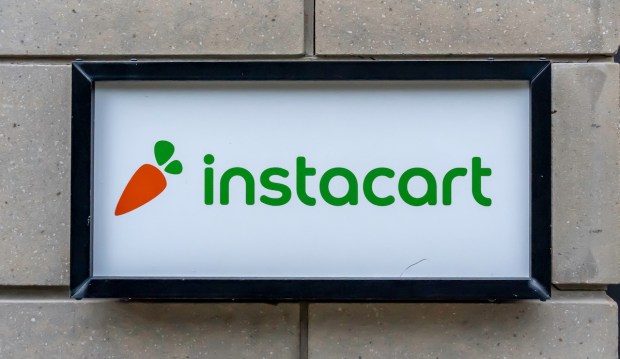
As Instacart’s ad business and other B2B offerings grow quicker than its consumer transactions, the aggregator is expanding its offerings for small brands to reach new business customers.
The company announced Thursday (Nov. 16) the launch of a new digital sell sheet capability to connect emerging brands to retailers. Through the tool, these brands manage their retailer-facing digital presence through the aggregator’s Ads Manager platform, and retailers can browse through and contact these emerging brands more easily.
“We know that driving distribution in more stores is a significant challenge for emerging brands,” Instacart Chief Business Officer Chris Rogers said in a statement. “They’re working hard to break into a crowded industry, from attending trade shows to cold-calling retailers. Meanwhile, retail category teams are sifting through thousands of new products to find the right fit for their business and customers.”
He added in the statement the aggregator is “well positioned” to help connect them to retailers.
This streamlined sell sheet process is intended to enable retailers to make more informed decisions when stocking their shelves while helping emerging brands grow their in-store distribution.
The move comes as Instacart is increasingly driving revenue from other brands, with this business growing quicker than its consumer-facing business. The company shared in its earnings report this month, its first such report since going public, that advertising and other revenue was up 19% year over year, while transaction revenue was up 12%, and the number of orders only increased by 4%.
“Because we are able to really demonstrate performance of advertising online, CPGs are starting to unlock more ad dollars to go to our channel, and retail media in general, without having to trade that off with trade spend,” Instacart Chairman and CEO Fidji Simo told analysts on a call. “[They] are seeing that because these dollars return, there is room to actually grow these budgets.”
Additionally, the aggregator shared in its Form S-1 with the Securities and Exchange Commission (SEC) that advertising and other revenue made up 28% of total revenue in the first half of this year.
Many consumers now engage with grocery platforms digitally, creating an opportunity for brands. The PYMNTS Intelligence report “Consumer Interest in an Everyday App,” created in collaboration with PayPal, found that 45% of those who had bought groceries in the last month did so both via connected devices and traditional channels, and another 16% did so exclusively using connected devices.
Additionally, many consumers expect to step up their eGrocery engagement. The PYMNTS Intelligence study “Tracking the Digital Payments Takeover: Catching the Coming eCommerce Wave,” created in collaboration with Amazon Web Services, found that while only 12% of grocery purchases are made online, 1 in 3 shoppers said they are very or extremely likely to increase their online grocery purchases in the next year. Moreover, the study found that the value of the average eGrocery purchase is 32% higher than the average brick-and-mortar haul.